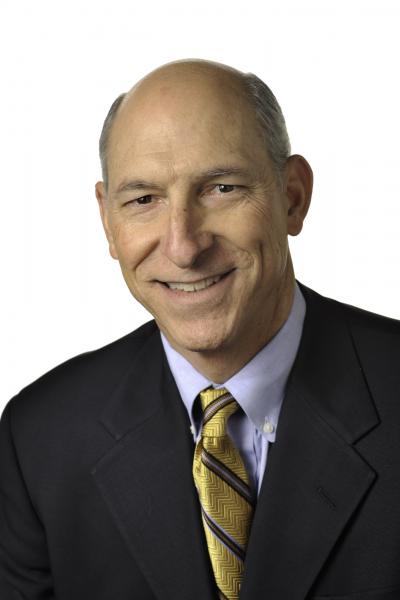WealthManagement.com: You actually started this rollout six years ago in the United Kingdom. Why?
Steve Onofrio: The U.K. environment was devoid of technology, well behind the U.S. We said, “Let’s develop it there first. There’s a lot of opportunity.’ It’s been live there since 2006. We have 18 clients on that, and we’re doing really well, $20 billion dollars (in assets), a couple of thousand accounts on the system.
We said, “Now we’re ready, let’s bring it over to the U.S.” We implemented it with 85 clients in September of 2011, but they were low volume clients (about $50 million in AUM). It allowed us to assimilate it into our structure, implement the training and the service and the support. On July 2, we implemented it into five larger-volume clients, these are multi-hundred million dollar clients. They’re all asset types from mutual funds to securities, including ETFs and many nonpublic securities as well.
WM: Is there a perception in the industry that SEI was behind the curve?
S.O.: Yes. Most of our clients have most of their assets with us but there are clients that operate under mobile custodial environments because we did not incorporate non-SEI assets into our automation. You could say we forced them to go to a second custodian because if they felt like they needed an ETF or an alternative and we didn’t integrate that into our technology, they had to take a step back and use subsystems and manual interface. So we now have gotten rid of all of that and it’s all fully automated for any asset type. Outside of the wirehouses, it’s the only platform for independents that integrates the investment platform with the custody platform.
WM: What’s wrong with the system advisors are using now?
S.O.: The advisor does the model management, their rebalancing of accounts, and then has a trade file that they export back to the custodian, and it gets traded. Well, there’s time, there’s people costs, there’s software costs because an advisor would have had to buy one of the portfolio management systems. There’s reconciliation services because there’s a lot that can go on between the time an advisor downloads the transactions, imports them into the portfolio management system, does the tax planning, does the rebalancing, uploads the trade files. Things can happen. Assets are mispriced. Corporate actions happen, dividends, interest.
So the difference is they save money because they don’t have to buy the outside technology, what I call the specialist subsystems, which are not integrated to the custodian. Advisors don’t have to spend money on rebalancing systems, portfolio management systems, reporting systems. The onetime purchase of those types of systems is about $250,000 on average. The ongoing maintenance of those systems, depending on how big your shop is, is between $100,00 and $175,000 a year between maintenance upgrades of software, time required to implement that, the staff required to do all the manual movement, somebody has to import or export. It doesn’t happen automatically.
The real win here is keeping the advisors in the advisory business, not in the technology business. So it’s a much more streamlined, seamless investment in technology. Or if an advisor doesn’t want to do that, we have an aggregation platform that will pull in all those assets into the SEI system so the advisor can see all the client’s assets in one place, report on that from a performance and statement standpoint as well. That’s new.
There’s a liability decision. If the staff has to know three different custodians, then they have to know the policies and procedures of each of those, and if they miss trading times and they enter things wrong, then the liability is on the advisor and the staff. This reduces all that.
WM: What does SEI charge to use the new system?
S.O.: This will be a no-charge upgrade, everyone is getting the system at no charge starting January 2013. The only time there will be a charge is when SEI is not receiving any revenue on a particular asset. In other words, if they’re using SEI funds, there isn’t a charge. It’s only when an advisor is choosing a fund or security that doesn’t revenue share, we will charge a platform fee, between 10 and 20 basis points, and there will be a nominal transaction fee—$5 for securities and $8 for mututal funds. As many shares as you want to. That’s significantly lower than anything in the industry.
That fee, by the way is only charged on those assets that we’re not receiving revenue on. If 80 percent of the portfolio is invested in SEI assets or revenue sharing assets, we’re only charging that 10 and 20 basis point platform fee on the 20 percent of the portfolio where we’re not receiving revednue
WM: What’s your advisor mix?
S.O.: Seventy percent of our advisors are affiliated with a broker dealer; 30 percent are completely RIA or fee-based only.
WM: What’s your next move?
S.O.: In the last 18 months I created a new sales team for the larger market. That team and I have been going around the United States talking to current large SEI clients, former SEI clients, and large advisors that have never used SEI. When an RIA gets to $250-$300 million in assets under management, then they start to deal with more complex clients and they start to in-source some of the investment expertise; that’s when they start to require more flexibility in the type of investments that they implement.
WM: What did you learn in the process?
S.O.: What surprises us is when we talk to the larger advisors and everybody says technology is integrated, and it’s really not. It just isn’t. Integrated and interfacing are two different things. They’re doing a lot of manual importing and exporting. The subsystems themselves are good, they fill the gap for someone who doesn’t have an integrated platform like ours. But somebody had to manually execute it and interface with it.


